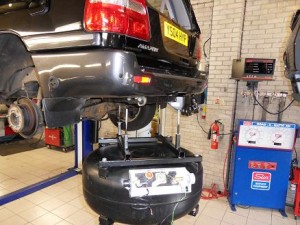 Most people make the mistake of contacting several installers within their immediate area and simply ask them to quote a price for their particular vehicle. It is fair to assume that more often than not they will not choose the cheapest quote, or the dearest but quite often the one in the middle. Using this method presumably makes them think they are not choosing the worst installer or being over charged by the dearest.
Most people make the mistake of contacting several installers within their immediate area and simply ask them to quote a price for their particular vehicle. It is fair to assume that more often than not they will not choose the cheapest quote, or the dearest but quite often the one in the middle. Using this method presumably makes them think they are not choosing the worst installer or being over charged by the dearest.
In my experience, whilst quoting customers over the phone I have found that most have not got a clue about the different types of LPG systems available. They do not know the difference between single point or multi point, closed loop or open loop, sequential or non sequential or what is the most suited to their type of vehicle.
Most are quite simply interested in obtaining a cheap quote not realising how much an error at this stage might cost them in the long term.
A vehicle manufacturer will have spent millions of pounds and thousands of hours on developing the vehicles petrol engine management system to perfect driveability, performance and good emissions. What is even more amazing is the LPG installer is now expected by the customer to take a universal off the shelf LPG kit, fit it to the vehicle and deliver similar results.
When obtaining quotes some customers seem to suddenly become experts in choosing which installer and which system to chose whilst some have no idea in reality the difference between good and bad.
Installations do vary from vehicle to vehicle but the major difference is not the LPG tank size and location but what goes on under the bonnet.
The tank fitment varies from vehicle to vehicle but should not prove too much of a complexity to the majority of installers, this involves competence, pride and engineering skills. What really changes from vehicle to vehicle is what goes on under the bonnet and that which integrates with the cars everyday complex engine management system.
What is worrying is that anyone can overnight become an official and insurance approved LPG installer. Unfortunately, to become LPGA approved does not mean that the installer has had to come from a motor vehicle background or prove his knowledge and understanding of how engine management systems work. As long as a minimum installation standard has been met in accordance with LPGA safety guidelines then anybody can become approved.
As some customers have found to their expense, if a complaint is made to the industries governing body, the LPGA, they are only able to check if the system has been fitted with its safety guidelines and not how the vehicle performs. How well the LPG system has been fitted as opposed to how badly the vehicle runs are the main concerns of the LPG Association. So, now you see, choosing an installer who is approved by the LPGA is no guarantee that they are able to make your vehicle run perfectly well on both petrol and LPG.
The following is a guideline of what questions you should be asking and observations you should make:
- Does the installer come from a motor trade background and able to prove previous business involvement of repairs to motor vehicles.
- Is the workshop immaculately clean, i.e. no oil on the floor, wing and seat covers being used, the workshop lighting should be good, heat in the winter and cool in the summer, giving staff ideal working conditions.
- The minimum equipment requirement should be a 4-gas analyser, 2 channel oscilloscope, European and Asian scan tools for reading the vehicles OBD data (on board diagnostics), 2 or 4 post vehicle lift, smoke test machine, multi meter and sensor simulator tester, on the road AFR (air fuel ratio) test equipment for 4 wheel drive vehicles (if only a 2 wheel drive rolling road), ignition output and coil KV test equipment, LPG injector flow test bench, dynamic compression tester, petrol injector flow test bench also fuel flow and fuel pressure test equipment.
- Are the installers contactable out of normal hours?


